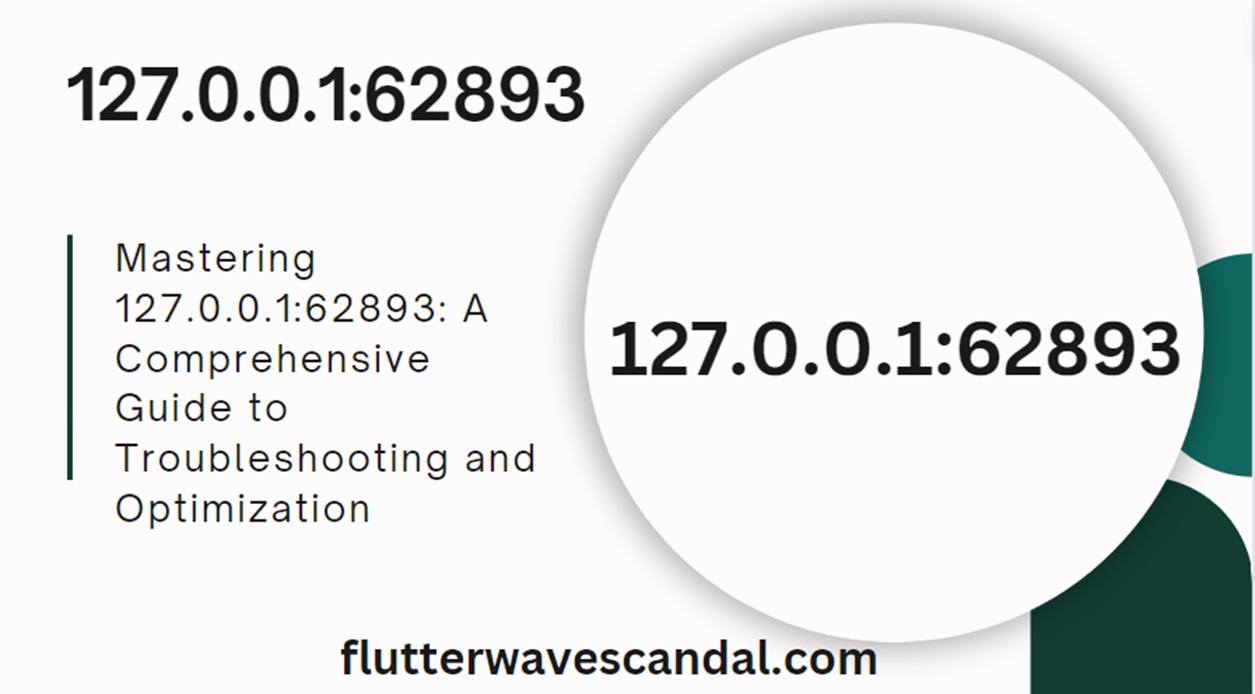
127.0.0.1:62893
Introduction to 127.0.0.1:62893
The address 127.0.0.1:62893 refers to a specific instance of a localhost communication on a particular port. Localhost, denoted by the IP address 127.0.0.1, is a loopback network interface used in computer networking to communicate with oneself. The port number 62893 represents a specific gateway for this communication. Understanding and troubleshooting issues related to 127.0.0.1:62893 can be crucial for developers and IT professionals working with local servers and networked applications.
Table of Contents
What is 127.0.0.1?
The Concept of Localhost
Localhost is a hostname that means “this computer” or “the local machine.” When you point your web browser to http://localhost, you are directing it to the computer you are currently working on. This is primarily used for testing and development purposes.
The IP Address 127.0.0.1
The IP address 127.0.0.1 is part of the IPv4 address block reserved for loopback purposes. Any IP within the 127.0.0.0/8 range is designated for loopback, but 127.0.0.1 is the most commonly used. When an application sends data to 127.0.0.1, it is essentially sending data to itself.
Understanding Port Numbers
What is a Port?
In networking, a port is a logical construct that acts as a communication endpoint for the transmission of data. Ports allow a single host with a single IP address to run network services. Each port number, ranging from 0 to 65535, can be assigned to a different service.
The Role of Port 62893
The port number 62893 is a dynamic or private port, typically used for temporary purposes. When you see 127.0.0.1:62893, it means the service or application is using port 62893 on the local machine to communicate.
Common Uses of 127.0.0.1:62893
Development and Testing
Localhost and dynamic ports are extensively used by developers to test applications in a local environment before deploying them to production. For instance, web developers might run a local web server on 127.0.0.1:62893 to test their websites.
Debugging and Diagnostics
IT professionals use localhost to troubleshoot and diagnose network issues. By running services locally on ports like 62893, they can isolate problems without affecting other systems.
Troubleshooting Common Errors
Despite its simplicity, using localhost with specific ports can sometimes lead to errors. Here are some common issues and their solutions.
Port Already in Use
Error Message:
javascriptCopy codeError: Address already in use
Cause:
This error occurs when another application is already using port 62893.
Solution:
- Identify the Process: Use a command to identify which process is using the port. For example:
- On Windows:
netstat -ano | findstr :62893 - On Linux:
lsof -i :62893
- On Windows:
- Terminate the Process: Once identified, you can terminate the process using:
- On Windows:
taskkill /PID <pid> - On Linux:
kill -9 <pid>
- On Windows:
- Change the Port: Alternatively, change the port number in your application’s configuration file to a different unused port.
Firewall Blocking the Port
Error Message:
Copy code Connection refused
Cause:
The firewall might be blocking the port 62893.
Solution:
- Check Firewall Settings: Ensure that the firewall allows traffic on port 62893. This can be configured in the firewall settings.
- Allow the Port:
- On Windows: Use Windows Defender Firewall to allow the port.
- On Linux: Use
iptablesorufwto allow the port.
Application Misconfiguration
Error Message:
cssCopy codeFailed to bind to port 62893
Cause:
This error often indicates a misconfiguration in the application.
Solution:
- Check Configuration Files: Review the application’s configuration files to ensure the correct port is specified.
- Update Application Settings: Modify the settings to use the appropriate port and restart the application.
Insufficient Permissions
Error Message:
Copy codePermission denied
Cause:
The application may not have the necessary permissions to use port 62893.
Solution:
- Run as Administrator: On Windows, run the application as an administrator.
- Use
sudo: On Linux, usesudoto grant the necessary permissions:bashCopy codesudo <command>
Network Configuration Issues
Error Message:
wasmCopy codeNetwork unreachable
Cause:
Network settings on the local machine might be misconfigured.
Solution:
- Check Network Settings: Ensure that the network interfaces are correctly configured and active.
- Restart Network Services: Restart network services to apply changes:
- On Windows:
ipconfig /renew - On Linux:
systemctl restart network
- On Windows:
Advanced Troubleshooting Techniques
For more complex issues, advanced troubleshooting techniques might be required.
Using Network Sniffers
Network sniffers like Wireshark can be used to monitor traffic on port 62893. This can help identify what data is being sent and received, and diagnose potential issues.
Analyzing Logs
Reviewing application and system logs can provide insights into what might be causing issues with 127.0.0.1:62893. Logs often contain error messages and stack traces that can point to the root cause.
Best Practices for Using Localhost and Ports
Use Dynamic Ports Wisely
When configuring applications, use dynamic ports like 62893 judiciously to avoid conflicts and ensure smooth operation.
Regularly Update Software
Ensure all software, including development tools and network utilities, are regularly updated to benefit from the latest features and security patches.
Maintain a Clean Development Environment
Regularly clean up your development environment by terminating unnecessary processes and freeing up used ports. This practice helps avoid the common “port already in use” error.
Implement Robust Logging
Implement comprehensive logging in your applications to make troubleshooting easier. Logs should capture key events and errors, providing a trail to follow when issues arise.
Conclusion: 127.0.0.1:62893
Understanding and effectively troubleshooting issues related to 127.0.0.1:62893 is essential for developers and IT professionals working with local servers and networked applications. By following the troubleshooting steps outlined above and adhering to best practices, you can minimize downtime and ensure efficient operation. Whether you are developing a new application or maintaining an existing system, mastering the use of localhost and dynamic ports will significantly enhance your capabilities and productivity.




